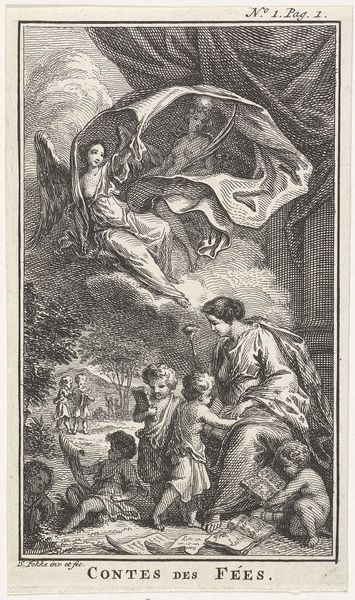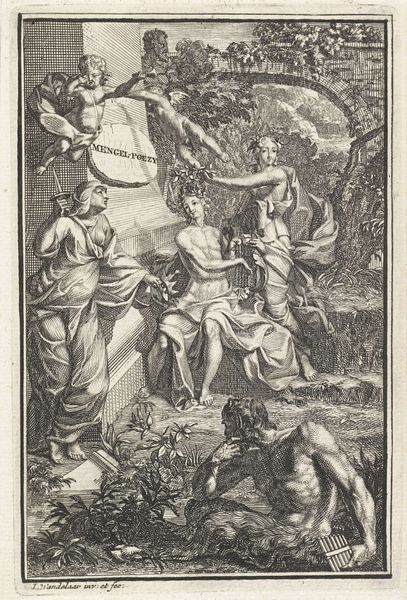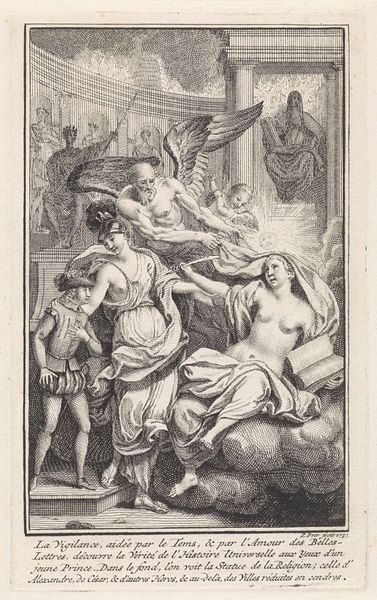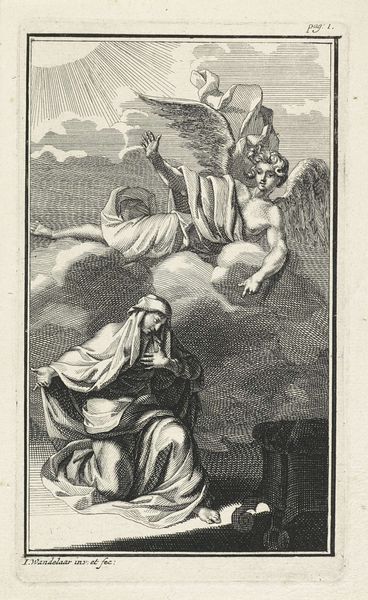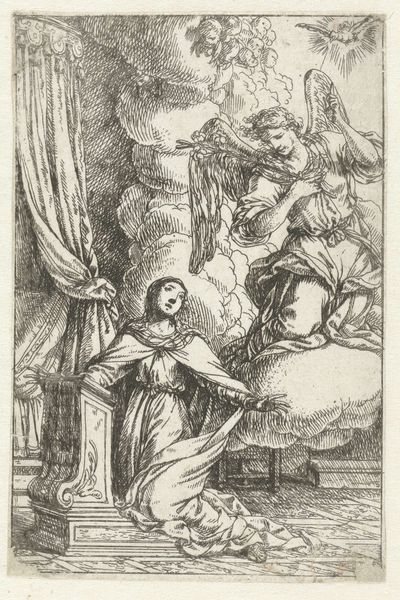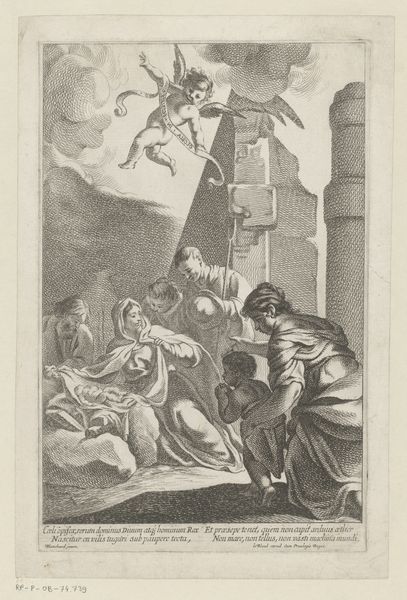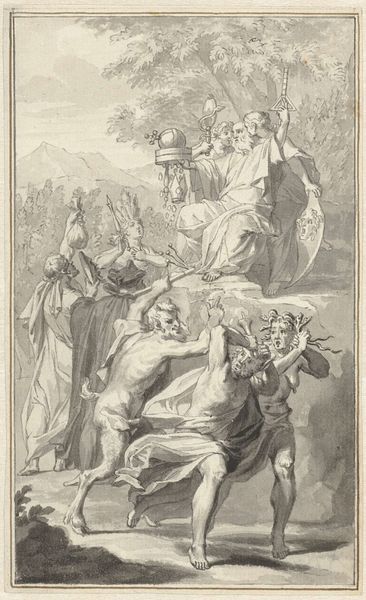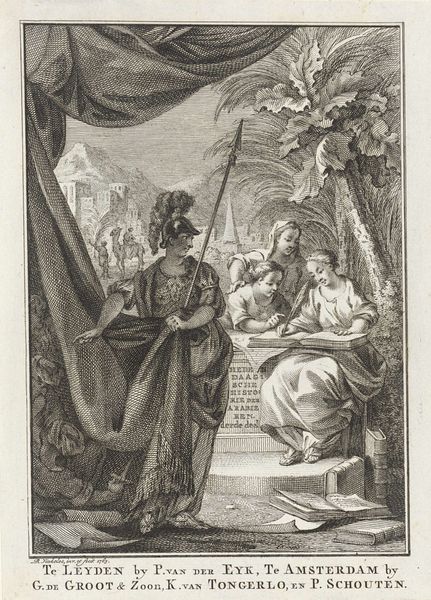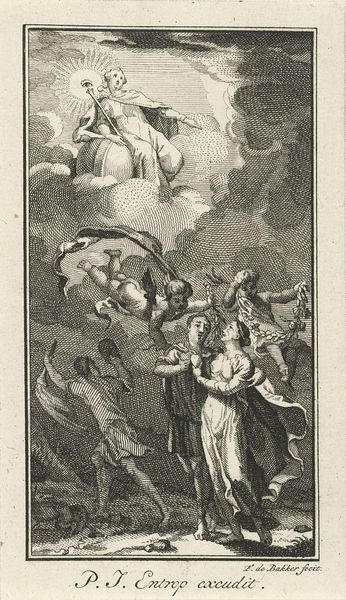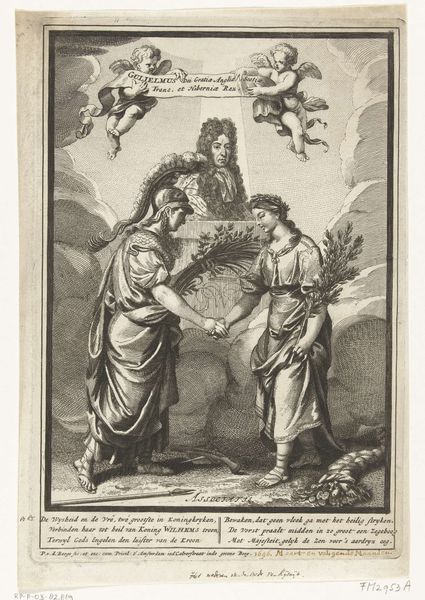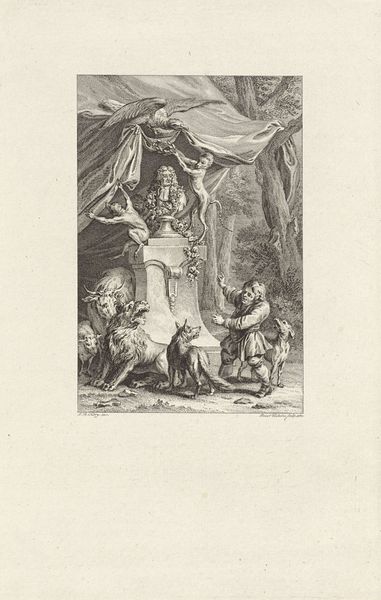
print, engraving
#
allegory
#
baroque
# print
#
old engraving style
#
figuration
#
line
#
history-painting
#
engraving
Dimensions: height 133 mm, width 83 mm
Copyright: Rijks Museum: Open Domain
Curator: Pieter Tanjé’s engraving, dating to the mid-18th century, is titled "De List vangt een spion," or "Cunning Catches a Spy." It resides here at the Rijksmuseum. Editor: Intriguing. It’s immediately apparent the artist is employing an almost theatrical composition—everything is carefully arranged like a stage tableau. The stark linework of the engraving only amplifies this feeling of poised drama. Curator: Indeed. Tanjé’s piece exemplifies the Baroque style through its elaborate allegory. We see figures representing cunning, politics, and danger, all intertwined in the act of exposing a spy of Kouli-kan. The heavy lines of the figures contrast the wispy sky to draw us into the drama below. Editor: Note the distinct use of line and its effect on texture and volume. Look how Tanjé modulates the density of his hatching to suggest the drape of fabrics, the weight of bodies, and, more subtly, the emotional intensity of the scene. He seems to deliberately forgo any smooth tonal gradations in favor of high contrast and intricate pattern-making. Curator: The work exists, of course, within a socio-political context. Kouli-kan, or Nadir Shah, was a powerful Iranian ruler. The print alludes to the constant political machinations and espionage of the period, reflecting contemporary anxieties surrounding foreign influence. Editor: Absolutely. And there’s also something unsettling in the composition—how the figures are actively participating in this act of revelation, obscuring even as they reveal. That hooded man could be any one of us. Is that his own dagger or does one of the others plan to stab him once they catch him? Curator: Such readings enrich our comprehension. Considering this piece as both formal exercise and socio-historical record allows a much richer understanding. The allegorical mode invites interpretation across contexts. Editor: It makes me consider the timeless nature of deception and power. The scene resonates beyond its specific time. Even in the twenty-first century, the complexities of espionage and the blurred lines of truth remain highly relevant topics.
Comments
No comments
Be the first to comment and join the conversation on the ultimate creative platform.

